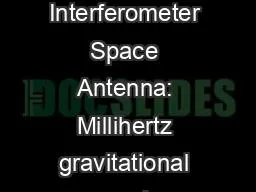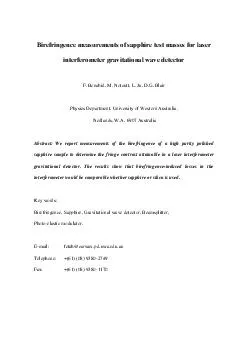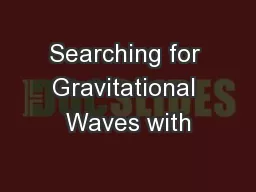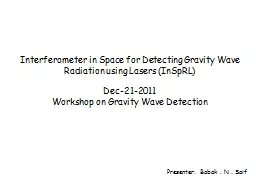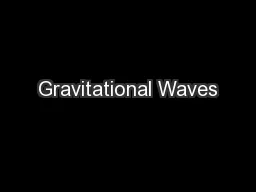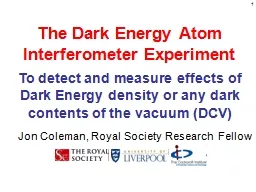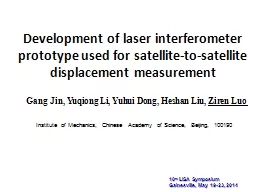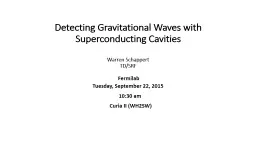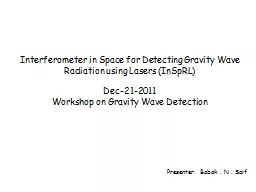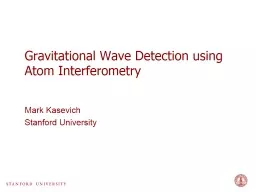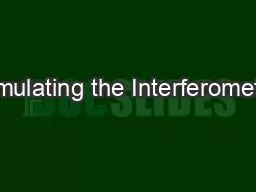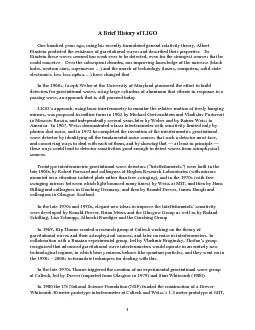PPT-The Laser Interferometer Space Antenna: Millihertz gravitational wave science
Author : dsuser1 | Published Date : 2020-07-03
John Baker NASAGSFC GWADW 2018 Gridwood AK 13 May 2018 LISA Opening the millihertz band Numerous sources Stronger gravity LISA science in milliHz band Science
Presentation Embed Code
Download Presentation
Download Presentation The PPT/PDF document "The Laser Interferometer Space Antenna: ..." is the property of its rightful owner. Permission is granted to download and print the materials on this website for personal, non-commercial use only, and to display it on your personal computer provided you do not modify the materials and that you retain all copyright notices contained in the materials. By downloading content from our website, you accept the terms of this agreement.
The Laser Interferometer Space Antenna: Millihertz gravitational wave science: Transcript
Download Rules Of Document
"The Laser Interferometer Space Antenna: Millihertz gravitational wave science"The content belongs to its owner. You may download and print it for personal use, without modification, and keep all copyright notices. By downloading, you agree to these terms.
Related Documents

